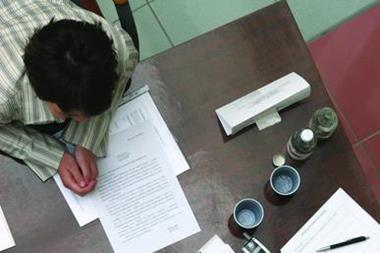Misconceptions, resistance and lack of knowledge about rehabilitation is costing Britain’s manufacturers
Continuing failure to break down the barriers to effective rehabilitation of employees is costing Britain’s manufacturers up to £610m a year according to a report on sickness absence by EEF, the manufacturers’ organisation in partnership with Unum.
The EEF’s Sickness Absence Report 2008 shows that those organisations stating that they do not encounter any barriers to rehabilitating employees, on average, have sickness absence rates that are 0.7% lower than those with barriers . On an annual basis, this means an extra 1.5 days attendance per worker or approximately 4.5m days of work lost across manufacturing industry.
Major barriers to rehabilitation which most affected sickness absence rates were identified in the report as the ‘misconceptions about the effect of the employee’s health condition’, ‘employee resistance to rehabilitation’, ‘the role of General Practitioners in promoting rehabilitation’ and ‘concern about employees being protected under the Disability Discrimination Act’
Commenting on the findings, EEF chief medical adviser, Professor Sayeed Khan, said: "Promoting rehabilitation in the workplace is the single biggest factor that government, employers, employees and healthcare professionals can address in tackling our sickness absence record. Dame Carol Black’s review of the health and well-being of the working population is a critical part of this process and we need all stakeholders to support this if we are to make the necessary step change in behaviour."
Professor Mike O’Donnell, Unum chief medical officer, added: "We know that many of the things that prevent people from returning to work are unrelated to their actual health condition. Unum’s work with Cardiff University has highlighted the importance of psychosocial factors – including beliefs, fears, advice from family - in prolonging absence from work, and these results confirm that the employee’s health condition is only one of the many factors in preventing return to work. Employers and healthcare professionals need much greater awareness of these psychosocial issues when assessing how to help people return to work."
Commenting on the report, Dame Carol Black, national director for Health & Work, said: "The results echo much of what I discovered during my review and it is encouraging to see support for one of my key proposals – the Fit for Work service. I am glad to see EEF endorsing the idea and recommending it should be a priority. The survey also importantly highlights the issue of mental health problems, an area where there needs to be early intervention to prevent such problems becoming long-term and leading to people losing their jobs."
The report also shows that those companies investing in rehabilitation and absence management policies, especially training for line managers, are continuing to reap the benefits with lower absence rates and higher levels of profitability.
87% of companies now have a written policy on absence management, whilst 38% of managers received training in managing long term sickness absence, up from 34% in the 2007 survey.
The survey showed the positive benefits of such investment with 30% of companies who trained their managers reporting a decreasing trend in all types of sickness absence. This compared to 21% where no absence management training was carried out.
Other findings include:
That sickness absence is increasing. The overall sickness rate in manufacturing has remained stable at 3% and 6.8 days per employee compared to the 2007 survey, although there has been a slight decline since 2006.
That it is inevitable for employees to have days off sick. On average, 40% of employees are reported to have no absence.
That older workers have greater levels of absence. Though there is a slight increase in absence amongst the over 40s it is statistically insignificant.
That sickness absence increases with having a sick pay scheme. The survey shows no evidence of this.
That stress is more common amongst older employees. Companies with a younger workforce (below 40) are much more likely to report stress as a cause of long term sickness.
That only large companies offer sick pay schemes. 78% of small companies operated sick pay schemes, compared to 91% of medium and 94% of large employers.




















No comments yet